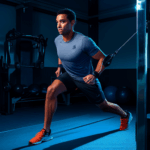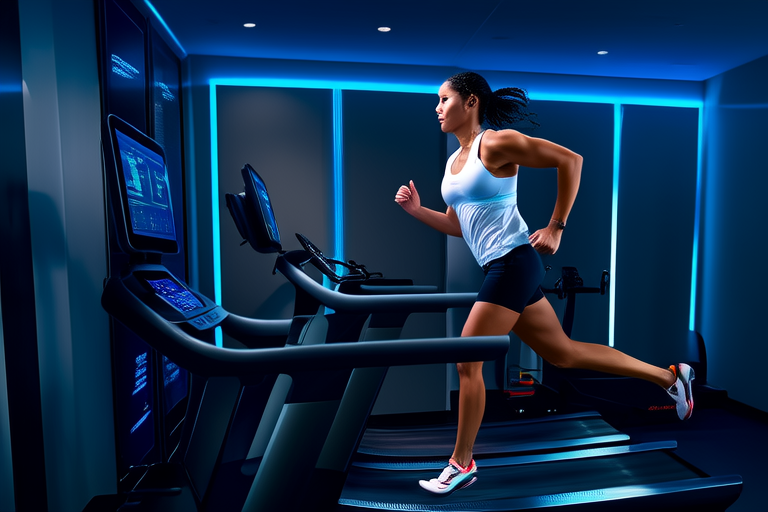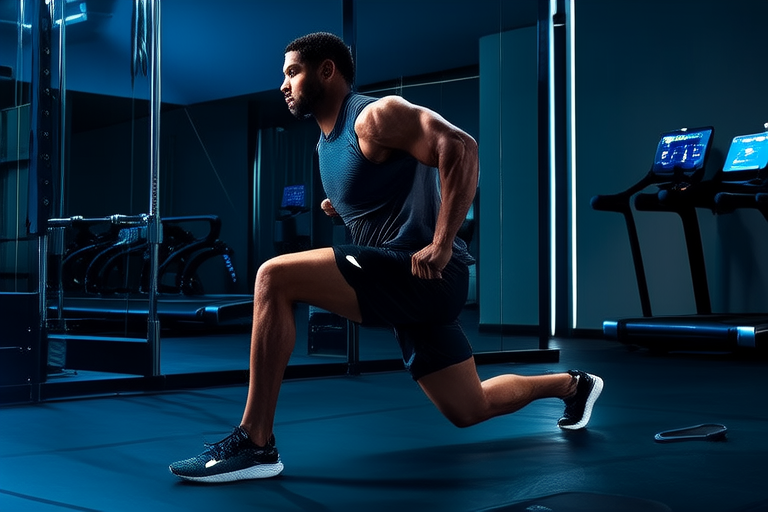Boosting Performance: Sports Science and Safety Precautions
In today’s competitive world of athletics, the pursuit of peak performance is more intense than ever. Athletes and their support teams are constantly seeking ways to enhance capabilities while minimizing risks. Integrating sports science into training regimens offers a structured approach that not only optimizes performance but also ensures safety. By understanding and applying principles from biomechanics, physiology, and psychology, athletes can achieve their full potential. This article delves into the key principles of sports science and explores essential safety precautions, highlighting the critical balance between pushing physical boundaries and safeguarding health.
Key Principles of Sports Science: Enhancing Athletic Performance
The field of sports science encompasses several disciplines that collectively aim to improve athletic performance. Biomechanics, physiology, and psychology are three fundamental areas that provide valuable insights and methodologies for optimizing training programs.
Biomechanics: The Study of Movement
Biomechanics focuses on the mechanical laws relating to movement and forces acting upon the human body during exercise. Understanding these principles allows athletes to refine their techniques for greater efficiency and power. For instance, in swimming, athletes can benefit from learning about drag reduction techniques and improving stroke mechanics. Research has shown that incorporating video analysis and feedback into training sessions helps swimmers make precise adjustments to their form, leading to faster times.
In running, biomechanical assessments can identify individual strengths and weaknesses, guiding the development of personalized training plans. A common technique involves analyzing stride length and frequency to determine optimal pacing strategies. Additionally, studies have demonstrated that strength training exercises targeting specific muscle groups can significantly improve running economy, thereby reducing energy expenditure and enhancing endurance.
Physiology: The Body’s Response to Exercise
Physiological adaptations to training play a crucial role in enhancing athletic performance. Cardiovascular fitness, muscular strength, and metabolic efficiency are key areas influenced by various types of exercise. Endurance athletes often engage in interval training, which alternates periods of high-intensity effort with recovery phases. Scientific evidence suggests that this method promotes significant improvements in aerobic capacity, as it challenges the cardiovascular system to adapt more effectively.
Resistance training is another cornerstone of physiological development. It targets both muscle hypertrophy (increased muscle size) and neuromuscular coordination. Powerlifting and Olympic weightlifting are excellent examples where athletes build explosive strength through progressive overload. Moreover, incorporating plyometric exercises, such as box jumps and depth jumps, can further enhance power output by stimulating rapid muscle contractions.
Psychology: Mental Preparedness for Competition
Mental resilience and focus are vital components of successful athletic performance. Sport psychology addresses cognitive aspects like motivation, confidence, anxiety management, and visualization techniques. Many elite athletes employ mental rehearsal methods before competitions to simulate scenarios and prepare mentally for challenges. This practice helps reduce pre-game jitters and enhances concentration during events.
Goal-setting theory provides another psychological framework for optimizing performance. Setting SMART (Specific, Measurable, Achievable, Relevant, Time-bound) goals enables athletes to maintain direction and motivation throughout their training journey. Coaches and psychologists work together to create tailored plans that align with individual aspirations and long-term objectives.
Safety Precautions in Sports: Protecting Health and Well-being
While striving for excellence is commendable, prioritizing safety remains paramount. Proper implementation of safety measures ensures that athletes can continue pursuing their passions without compromising their health. This section outlines essential precautions, ranging from injury prevention strategies to recovery techniques.
Injury Prevention Strategies
Preventing injuries requires a multifaceted approach involving equipment selection, proper technique execution, and regular monitoring of physical condition. Wearing appropriate gear, such as helmets, pads, and footwear designed specifically for the sport, minimizes the risk of trauma. Additionally, adhering to established guidelines regarding technique reduces stress on joints and muscles.
Periodic medical evaluations help detect early signs of potential issues, allowing timely intervention. Athletes should consult healthcare professionals regularly to monitor overall well-being and address any concerns promptly.
Warm-Up and Cool-Down Routines
A well-rounded warm-up prepares the body for activity by increasing heart rate, blood flow, and flexibility. Dynamic stretches and light cardio exercises are effective ways to activate major muscle groups and enhance range of motion. Conversely, cooling down after workouts facilitates recovery by gradually lowering heart rate and promoting relaxation.
Hydration and Nutrition
Proper hydration and nutrition are critical for sustaining energy levels and supporting recovery processes. Dehydration impairs physical performance and increases susceptibility to heat-related illnesses. Therefore, athletes must consume adequate fluids before, during, and after exercise. Electrolyte replenishment drinks may be necessary for prolonged activities or high-intensity efforts.
Nutritional intake plays a pivotal role in fueling workouts and repairing tissues post-exercise. A balanced diet rich in carbohydrates, proteins, healthy fats, vitamins, and minerals supports optimal functioning. Timing meals around training sessions ensures that glycogen stores are replenished adequately.
Recovery Techniques
Effective recovery practices enable athletes to recover faster from intense training sessions and minimize the risk of overuse injuries. Sleep quality directly impacts physical and mental restoration; therefore, prioritizing restful nights is crucial. Incorporating active recovery methods, such as gentle stretching or low-impact activities, aids circulation and accelerates healing.
Massage therapy, foam rolling, and compression garments also promote blood flow and alleviate muscle tension. These modalities assist in flushing out metabolic waste products accumulated during strenuous exercises.
Recognizing Signs of Overtraining
Overtraining occurs when the body does not receive sufficient time to recover fully between bouts of intense exercise. Common symptoms include persistent fatigue, decreased performance, irritability, and changes in resting heart rate. Identifying these indicators early allows for corrective actions, such as adjusting training schedules or implementing additional recovery measures.
If left unaddressed, overtraining syndrome can lead to chronic fatigue, increased susceptibility to infections, and even burnout. Regular self-assessment and communication with coaches or trainers facilitate proactive management of workload and recovery.
Conclusion
The pursuit of athletic excellence necessitates a harmonious blend of pushing physical limits and safeguarding health. By leveraging sports science, athletes gain invaluable tools for optimizing performance while mitigating risks. Embracing key principles from biomechanics, physiology, and psychology equips individuals with knowledge and techniques to excel competitively. Meanwhile, adherence to safety precautions ensures sustained participation in sports.
To achieve this delicate equilibrium, athletes should collaborate closely with professionals like coaches, physiotherapists, and nutritionists. Their expertise provides personalized guidance tailored to individual needs and circumstances. Ultimately, fostering a culture that values both achievement and well-being will empower athletes to reach new heights in their respective disciplines.










